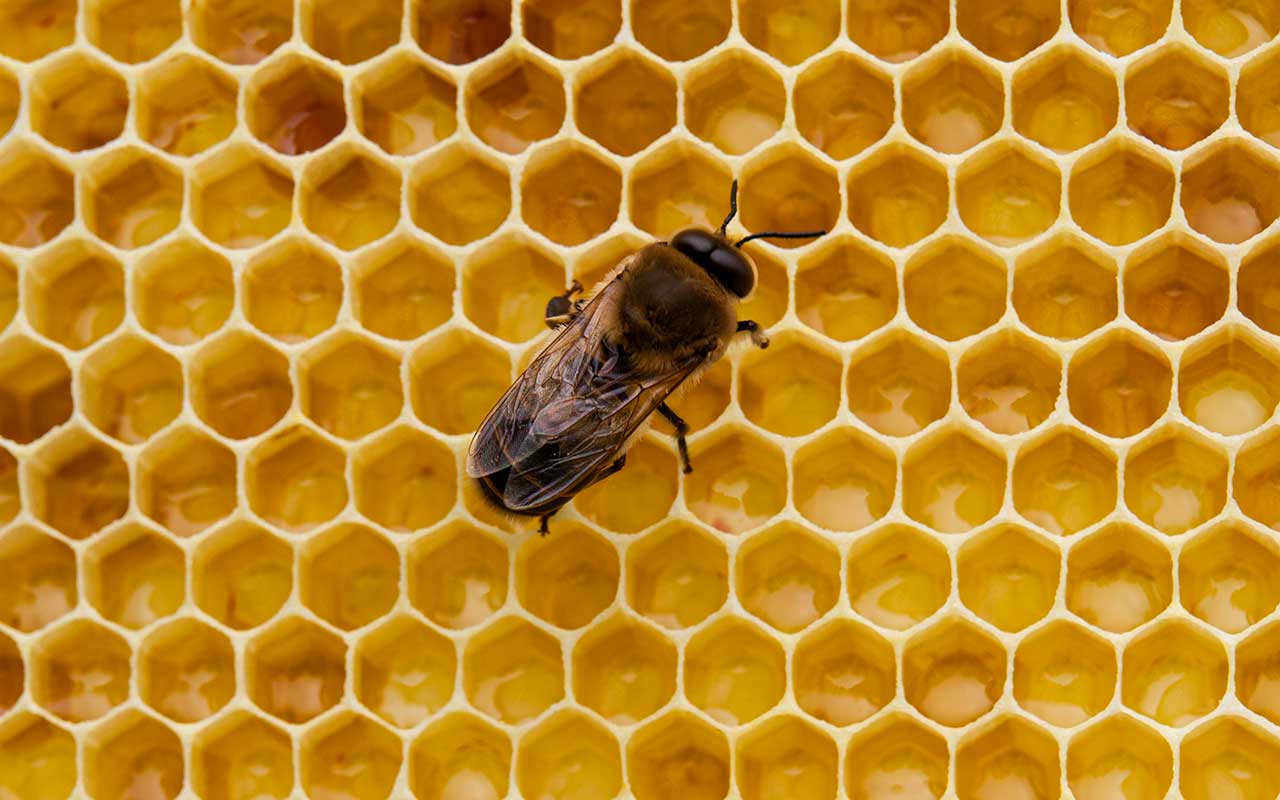Our Environment, Animal Tips & the Great Outdoors

Step Into the Hive: How to Help the Declining Bee Population
A few weeks ago, Gino Robustelli invited Lindsey and I to come visit his bee hives outside of the Harney tea factory. Lindsey, who has since gone back to college, is one of our summer writers and served as our cinematographer for our trip to visit the bees. The purpose of our visit was to see the bee hives, learn about their importance in the ecosystem, and for Gino to help us understand what we can do to help the struggling pollinator population.
When Lindsey and I first showed up to the Harney Tea Factory in Millerton, NY, on a humid August morning, the first thing we felt was apprehension.
We got out of Lindsey’s Volkswagen, already suited up in our beekeeping suits, and hesitantly approached the hill where Millerton’s resident beekeeper Gino Robustelli was already elbow deep in the honey bee hives.
Gino is a local beekeeping legend. He currently manages the bees at the Harney Tea Factory, which help to pollinate the hemp fields, and also manages the honey bee program at Silo Ridge in Amenia, NY.
He shouted over to us with a smile and encouraged us to come right over, so Lindsey started recording on her phone before pulling her glove up to her elbow, and we embarked on the ten step journey to the hives.
Stepping into the hive
My initial instinct was fear. While I’m not allergic to bees, I’ve never been particularly fond of them buzzing around my head, and my instinct is always to reach up and swat them away. But now we were on their home turf, and we needed to be courteous visitors.
The other thing that I had to adapt to at the start was the constant buzzing. I found it unsettling at first, and all I could think about was the bees trying to sting me. But according to Gino, bees are very docile creatures, and that’s what he told me as he handed me a frame full of bees hard at work making honey.
Before opening up the hives and taking out the frames, Gino sprayed smoke over the hives: “It calms them.” He’s been practicing beekeeping for nearly 40 years, so it’s safe to say that he knows a thing or two about how to handle bees. I trusted every word he told me.
“When we were young, we saw bees everywhere,” he says. “There’s a difference between domesticated bees in a hive and wild bees. Domesticated bees are intrinsically weaker and more susceptible to things like mites, whereas wild bees are not as susceptible to many of these things.”
Pollinator population is dwindling
Gino buzzes (pun intended) around the different hives, explaining to us that there are different types of frames used, and that can affect the production of the honeycomb. Wood frames can either come assembled or unassembled, while plastic frames typically come as one piece. Both can be fitted with a wax foundation, which provides a base for the bees to build the honeycomb on.
“When you’ve been doing something for so long, it’s amazing to actually go in and see them working and be able to understand them and what they’re doing,” Gino said.
While Lindsey and I are holding frames that are heavy with honeycomb, Gino goes on to explain the struggle that bees are enduring with pollination.
He told us that honey bees are among the most important pollinators. He said that there is a decline in pollinators and part of the reason is a lack of flowers being planted in the area. “Everyone is planting sterile landscapes and gardens that are just greenery. The problem with that is that foraging is then limited for bees, and if you limit their food, you kill them,” he said. “If you plant less flowers, then they have less food.”
Changes in landscapes and the increasing popularity of greenscapes have a negative implication for the overall environment, which won’t only affect the beekeepers and farmers, but the everyday person too.
“If bees fall back too far, it’ll be harder for us to push through,” said Gino.
Bee populations decrease, food prices increase
An article from the Natural Resources Defense Council (NRDC) states that a U.S. Department of Agriculture report recently found that “honey bee losses in managed colonies – the kind that beekeepers rent out to farmers – hit 42 percent this year.” This number is concerning because population losses below 18.7 percent are sustainable, but if beekeepers lose more of the population, then the entire colony could be in trouble. From the same study, the USDA found that “two-thirds of beekeepers reported losses above the threshold, suggesting that the pollination industry is in trouble.”
If honey bees were to go extinct, it would have unprecedented effects on our human diet and would likely cause an agricultural crisis at a level that we’ve never seen before. Fruits and vegetable prices would skyrocket, while some goods would just disappear completely. The NRDC states that the California Almond Board has been campaigning to save bees for years, as without bees, they say that “almonds simply wouldn’t exist.”
The NRDC also states that we’d still have coffee, but it would be incredibly expensive and hard to come by. Apples, avocados, onions, and strawberries are a handful of crops that rely heavily on bees for pollination. Gino mentions that if there are no bees to pollinate crops, it would fall on the farmers to do it by hand, which is not only incredibly time-consuming, but just simply unsustainable.
“Take apple farms for example, if farmers have to start [hand pollinating] then it’s every single flower on every single plant, and if you don’t pollinate that flower, you don’t get an apple,” he said. “It just wouldn’t be feasible.”
A day in the life of a beekeeper
After practicing beekeeping for nearly 40 years, it’s safe to assume that Gino has some crazy stories to tell. When I asked him what his craziest beekeeping experience was, he told me that a thunderstorm rolled in one day while he was working on the hives. A big blast of lighting and a loud boom of thunder rumbled across the sky, and the next thing he knew, the bees were swarming.
“So then I had half a million bees in the air just moving,” he laughed. “I was just standing there watching the bees fly right by me.”
Why I naively asked if there was any way to get the bees back, Gino shook his head. “You can’t. Thunder rocks the hive and the bees instinctively think something is wrong, so they fly away.”
Unprecedented challenges
When asked what the biggest challenge of beekeeping is, Gino simply responded: “Keeping bees alive.” With so many daily challenges such as the changing weather (i.e. drought conditions, excessive rain, extreme heat, and the smog we experienced this summer), plus feeding them when they’re not able to get enough food, keeping the bees alive, much less healthy and thriving, is no easy feat.
Gino said that this was the first year he had to feed the bees in the month of July due to all of the rain that the region experienced this summer. Many of the plants drowned due to the excessive rainfall, which meant that the bees didn’t have enough food to eat.
He said that one of the other challenges is understanding the plants and what’s happening around them in the environment. “I recently picked up two beehives off of a rooftop in Brooklyn and I wondered what they were doing there in the first place, but they were feeding on the rooftop gardens and pollinating the flowers in the botanical gardens down there,” he says. “So people and bees alike are adjusting to the changes in the environment.”
He says that moving bees is disruptive to them, but that they typically recover quickly. “Bees are instinctive, and they have a navigational system where they leave and enter the hive the same way. So the day after you move them, they’ll be confused for a little while, but then they’re good to go.”
As Gino closed up the hives and we made our way away from them diligently buzzing about hard at work on their honeycomb, I asked him if there was anything else we should know.
“That’s basically it,” he said. “We’re just trying to get people aware of the struggling bee population and the ways in which they can help.”
Read more about what you can do to help the bee population here, https://thebeeconservancy.org/10-ways-to-save-the-bees/
Read more about pesticide alternatives here, https://www.consumernotice.org/environmental/pesticides/roundup/alternatives/


